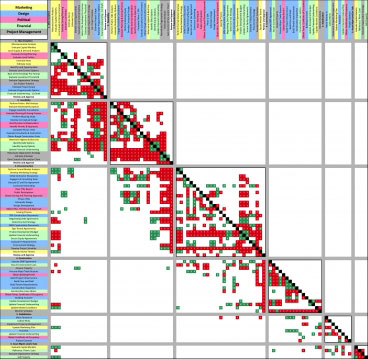Suppose you were asked to streamline the process of real estate development. Or to better organize the offices of an international manufacturer. Or to explain how the parts of a digital printer interact. The complexities of all these tasks would likely seem daunting.
|
ADVERTISEMENT |
Now suppose someone said you could accomplish these assignments by drawing a simple square chart on a piece of graph paper. No need for buggy software systems, labyrinthine flow charts, or bloated Venn diagrams. Sound appealing?

A design structure matrix model showing the real estate development process. Image courtesy of MIT Press
Welcome to the world of design structure matrix (DSM) modeling, a management exercise that forms one branch of MIT’s long-running institutional fascination with the analysis of complex systems. A DSM chart is a way of simplifying complex engineering tasks—say, the design of computer hardware or engines—to make them more efficient.
…
Add new comment